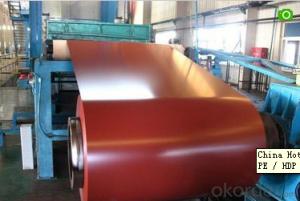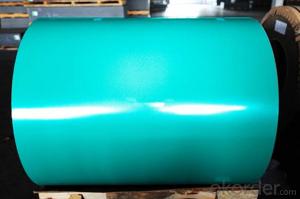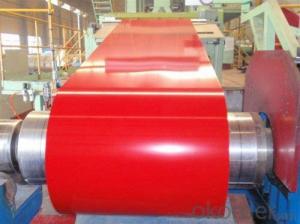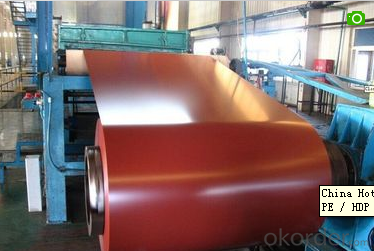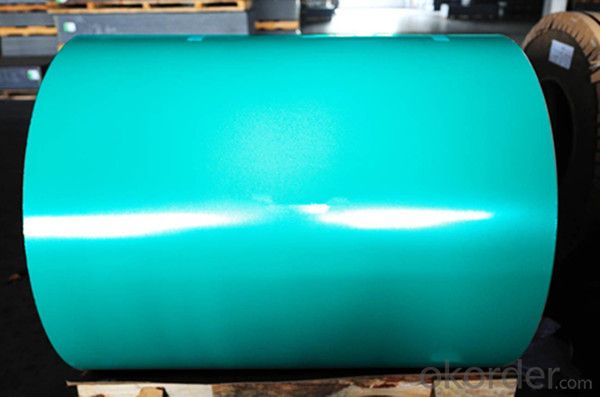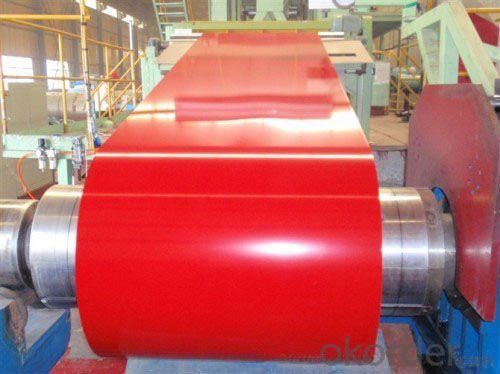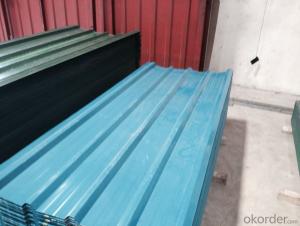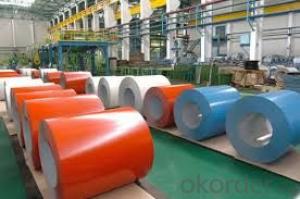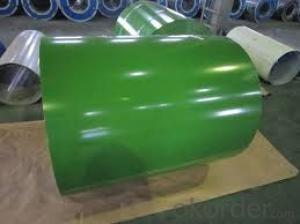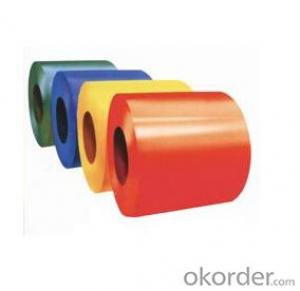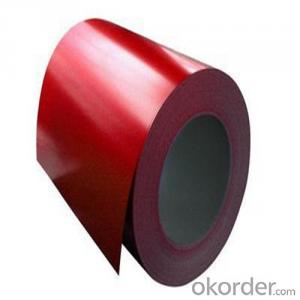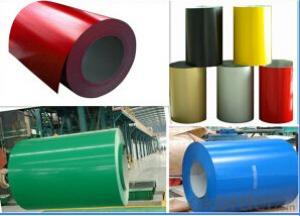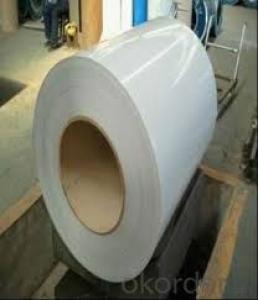PE PVDF PPGI Coil ID 508mm /Prepainted Galvanized Steel Coil
- Loading Port:
- Tianjin
- Payment Terms:
- TT OR LC
- Min Order Qty:
- 25 m.t.
- Supply Capability:
- 50000 m.t./month
OKorder Service Pledge
OKorder Financial Service
You Might Also Like
Specification
PE PVDF PPGI Coil ID 508mm /Prepainted Galvanized Steel Coil
1. Application of PE PVDF PPGI Coil ID 508mm /Prepainted Galvanized Steel Coil
Construction, the manufacturing of cars, ships,containers and household electric appliances, other industries usage
they are mainly used in construction, light industry, automobile, agriculture, animal husbandry, fishery and commerce, etc industries.
.Manufacture anticorrosion, industrial and civil architecture roof boarding, roof grille.
.Make home appliance’s case, civil chimney, kitchen utensils, etc
.Corrosion resistant parts of cars
.Food storage, meat and aquatic products’ freezing and processing equipment etc;
.The equipments to store and transport materials, and packing implements.
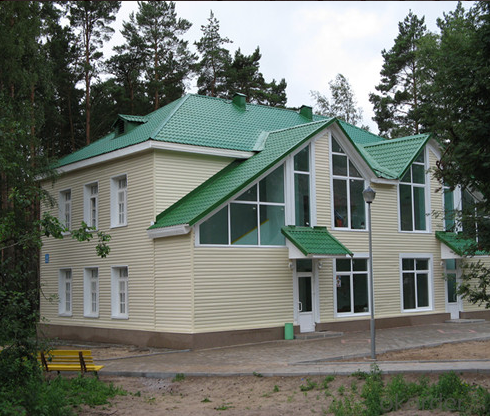
2.Features of PE PVDF PPGI Coil ID 508mm /Prepainted Galvanized Steel Coil
* uses hot dip galvanized steel sheet as the base material
* zinc layer protection, dope on the zinc layer can cover and protect the
steel base from corrosion
* color coated sheet is light, beautiful and has good anti-erosion performancevanized steel coil
* As a rich experience manufacturer, we provide quality product, competitive price and reliable after-sales service.
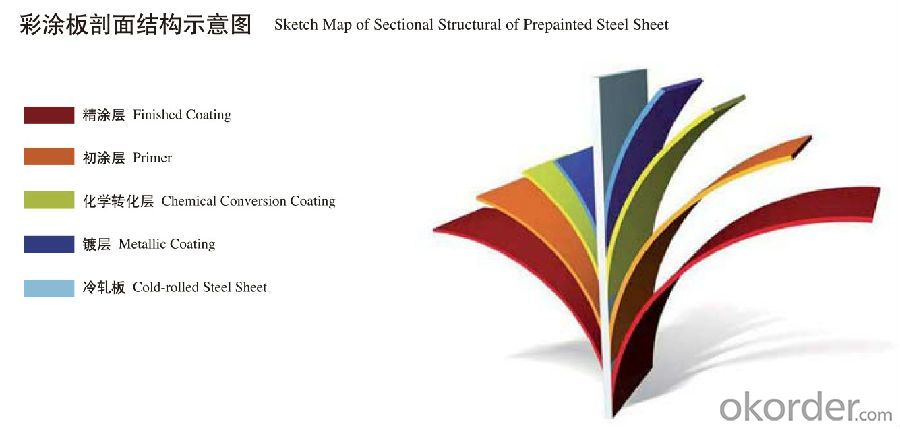
3.Surface Finish of PE PVDF PPGI Coil ID 508mm /Prepainted Galvanized Steel Coil
Surface finish | Pattern | Application |
Regular spangle | Standard spangles with flower pattern | General uses |
Small spanlge | Small spangles than regular | General painting applications |
Zero spangle | Extremely minimized spangles | Special painting applications |
4.PE PVDF PPGI Coil ID 508mm /Prepainted Galvanized Steel Coil image:
production
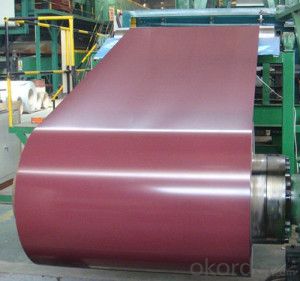
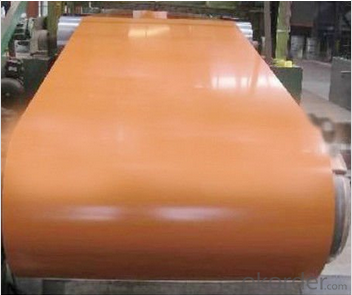
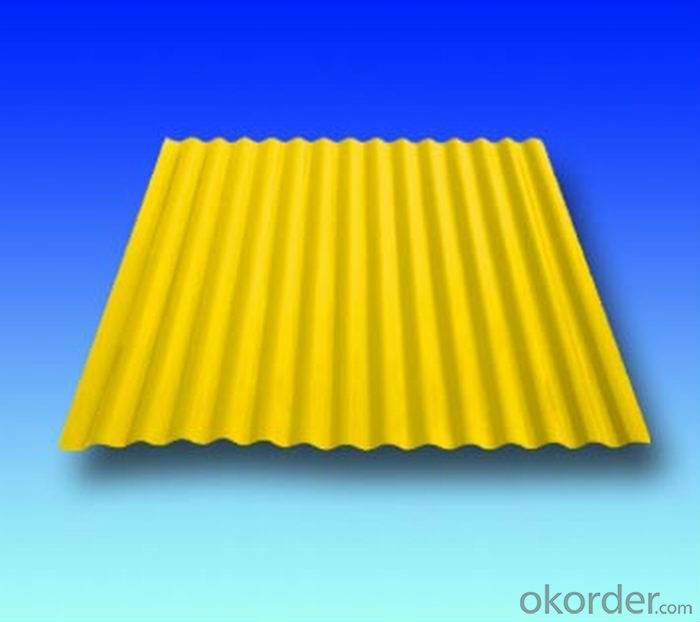
Application
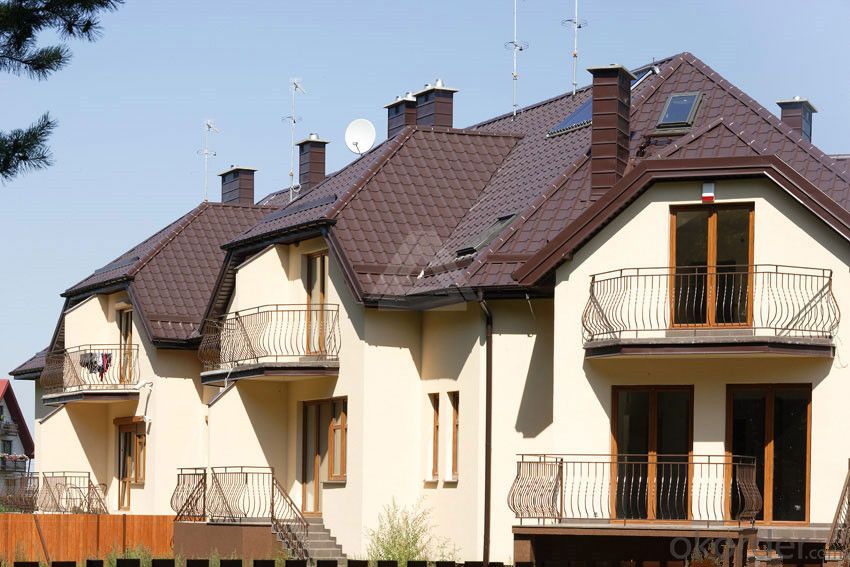
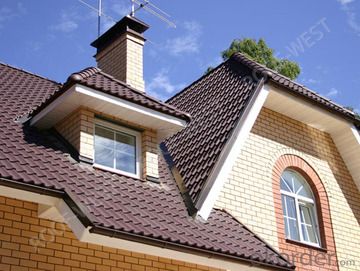
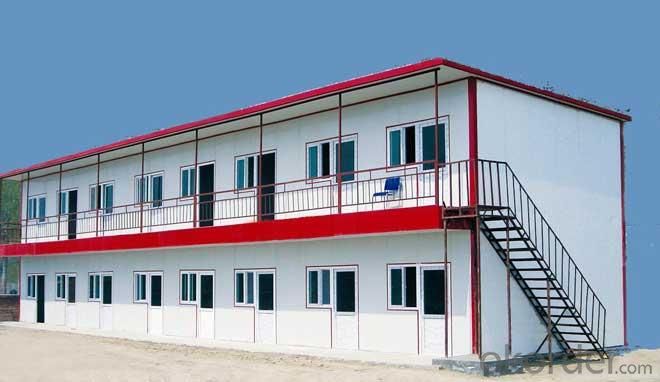
PROUDUCTION LINE:
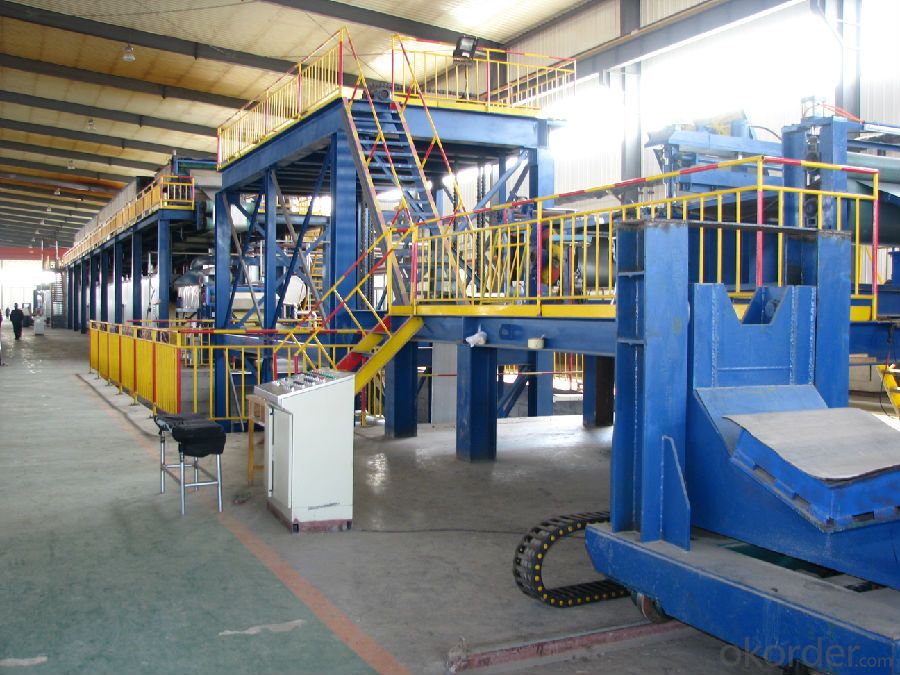
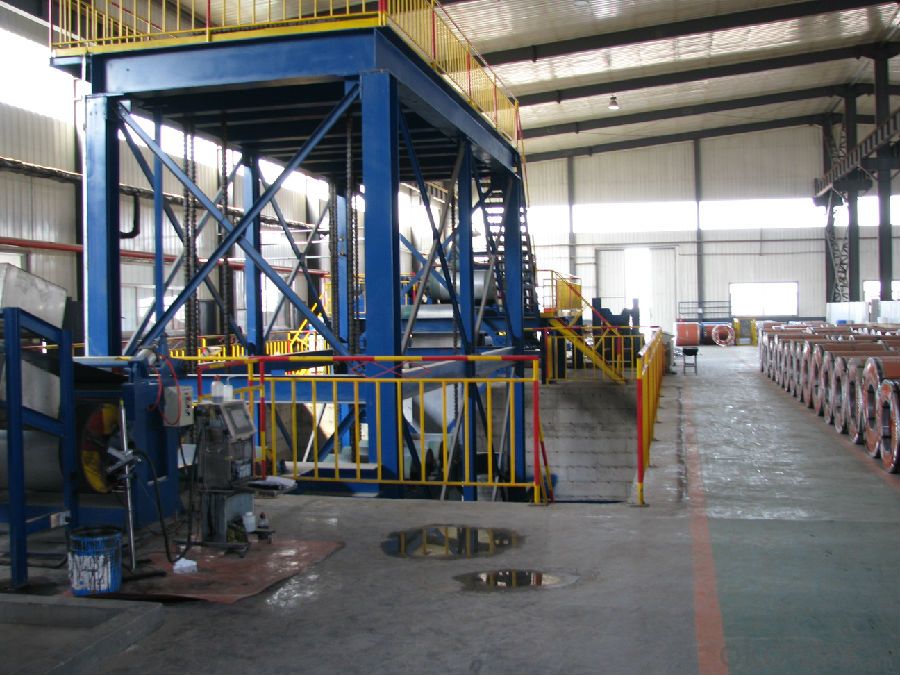
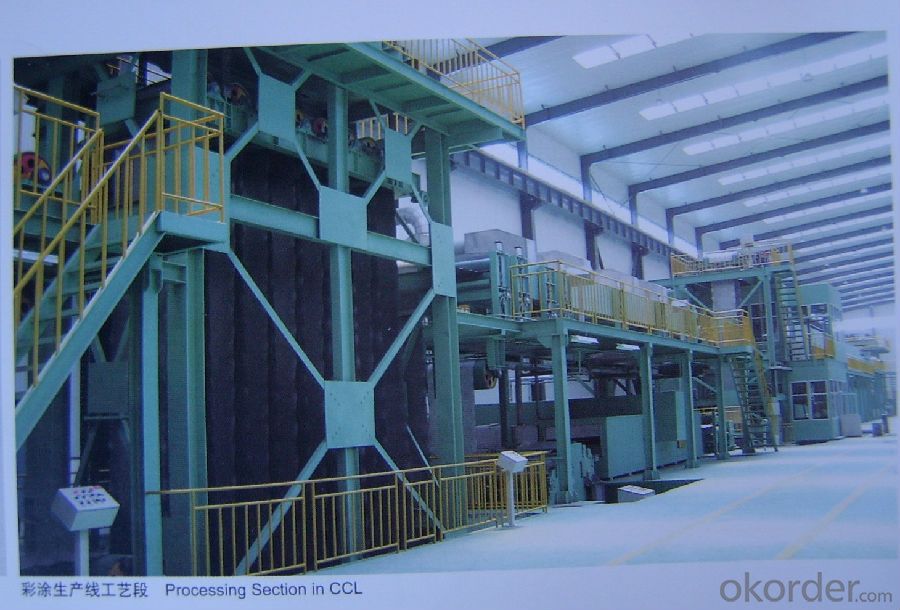
PACKING:
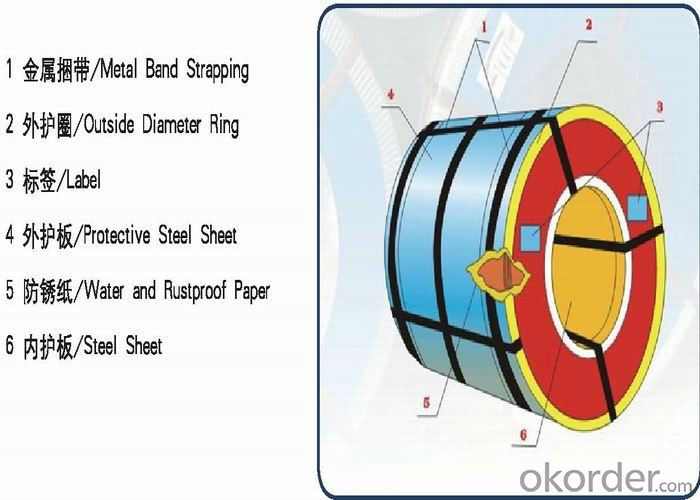
5.FAQ
We have organized several common questions for our clients,may help you sincerely:
①How about your Warranty?
Warranty: 1-Year for the whole light. Warranty is based on correct storage, installation, using and maintenanc
②How to guarantee the quality of the products?
We have established the international advanced quality management system,every link from raw material to final product we have strict quality test;We resolutely put an end to unqualified products flowing into the market. At the same time, we will provide necessary follow-up service assurance.
③How long can we receive the product after purchase?
In the purchase of product within three working days, We will arrange the factory delivery as soon as possible.
- Q: Ok I have a neodymium magnet, stuck to my fridge holding a old bottle cap opener for my beer it works fine. At the local rummage sale there was a beautiful cap opener my freind was selling for $0.25 she said had never beenUsed it was like 40 years old it is made a stainless steel. The magnet will not stick to it. I don't understand this looked this up and certain steels are not magnetic, I tried a experiment with my compass it don't point north as should it follows the bottle opener as I move it around it. If not magnetic why is this happening? Also tried placing near another neodymium magnet with a pull of about 200 lbs. Not I tiny bit of attraction to the metal. If so why is the tiny magnet in the compass attracted to it. But not a huge powerfull magnet.
- That's interesting that it caused deflection in the compass. A lot of stainless steels may be SLIGHTLY magnetic, because they have small amounts of ferrite or alpha-iron in them. Ferrite is one of the crystal phases of steel. It has a body-centered cubic (BCC) structure and it's responsible for the magnetism of ordinary steels. Adding certain elements like nickel, manganese, or molybdenum, changes the crystal structure of the steel to a face-centered cubic (FCC) structure, which is NOT magnetic. This crystal phase is known as Austenite or gamma-iron. However most iron alloys contain some impurities that may cause the steel to be not completely transformed into the FCC austenite phase, small areas remain as ferrite.
- Q: We just installed a stainless steel electric stove, what is the best way to keep it clean and shiney?
- A kitchen range finished in stainless steel looks professional and clean. Stainless steel stove requires a bit more cleaning than a traditional stove. Use an oil based product. Baby oil or WD40 are the products of choice for many people. You don’t want to put the oil directly onto the appliance, instead just pour some onto the cloth and wipe down the appliance. Routine maintenance on your stainless steel stove is the best way to keep the surface steel clean as well as scratch free.
- Q: What are the common coil surface finish standards?
- Some common coil surface finish standards include mill finish, brushed finish, polished finish, and coated finish.
- Q: How do steel coils contribute to the HVAC industry?
- Steel coils are an integral component of the HVAC (Heating, Ventilation, and Air Conditioning) industry and play a crucial role in the functioning and efficiency of HVAC systems. These coils are typically made from high-quality steel, such as stainless steel or galvanized steel, which ensures durability and resistance to corrosion. One of the main ways steel coils contribute to the HVAC industry is by facilitating heat transfer. HVAC systems use coils to transfer heat between the air and a refrigerant. In air conditioning units, for example, the evaporator coil absorbs heat from the indoor air, while the condenser coil releases heat to the outside air. The steel coils in these units provide a large surface area for efficient heat exchange, enabling the cooling or heating of the air as required. Moreover, steel coils also contribute to the overall energy efficiency of HVAC systems. By maximizing heat transfer, these coils allow HVAC systems to operate at optimal performance levels while consuming less energy. This not only helps reduce energy costs for users but also makes HVAC systems more environmentally friendly by minimizing energy consumption and greenhouse gas emissions. Steel coils in HVAC systems also contribute to the quality of indoor air. As air passes over the coils, any impurities, such as dust, dirt, or mold, can accumulate on the coil's surface. Regular maintenance and cleaning of the coils are essential to prevent the buildup of contaminants that could negatively impact air quality. Properly maintained steel coils ensure clean and healthy indoor air, which is particularly important for commercial buildings, hospitals, and other spaces where air quality is crucial. In addition to their heat transfer and energy efficiency capabilities, steel coils also provide durability and longevity to HVAC systems. Steel is a strong and resilient material that can withstand high temperatures, pressure, and environmental stressors. By using steel coils, HVAC systems can operate reliably and efficiently for extended periods, reducing the need for frequent repairs or replacements. Overall, steel coils are a vital component of the HVAC industry. They enable efficient heat transfer, improve energy efficiency, enhance indoor air quality, and provide durability to HVAC systems. Without steel coils, the performance and effectiveness of HVAC systems would be significantly compromised, making them an indispensable element of the HVAC industry.
- Q: could someone please explain to me in detail the functions of stainless steel wall ties?
- `You are not asking why they are stainless steel, but the function of wall ties. During construction of a house the wall ties start at damp proof course level. At all reveals ie doors /windows, one tie is placed on every 3rd course of bricks and 6 back from the reveal. Thereafter in the main run of brickwork 1 tie is placed every metre distance, starting at the DPC and the 6th course then the 12th and so on. They are not placed directly above each other, but in a sort of pyramid fashion. Their purpose is to hold the 2 skins of walling together, thus doubling the strength of the cavity wall in a very effective way. Stainless steel is a better quality of tie, but are not really necessary these days, because the cavity is insulated. In the old days you got condensation in the cavity and the ties rusted, and as a result of this disintegration you got bulging walls where one wall fell away from the other. Stainless steel lasted much longer because they did not rust so easily.
- Q: What are the different methods of forming steel coils?
- There are several methods of forming steel coils, including hot rolling, cold rolling, and continuous casting. Hot rolling involves heating the steel above its recrystallization temperature and passing it through a series of rollers to shape it into coils. Cold rolling, on the other hand, involves reducing the thickness of the steel by passing it through rollers at room temperature. Continuous casting is a process where molten steel is poured into a mold and then cooled and solidified into coils. These different methods offer varying levels of strength, durability, and surface finish in the resulting steel coils.
- Q: If a make a dish antenna of steel and of fiberglass, which would be more heavy and also which would be more expensive?
- Steel will be heavier but easier to manufacture. There won't be a huge weight advantage because you can use steel mesh which works the same as solid, near enough, as an electromagnetic reflector. Steel can just be pressed, fiberglass has to be laid up of resin and mat and then allowed to cure. Fiberglass will also need to be coated in something conductive whereas you can just spray paint the steel, or even buy it pre-coated.
- Q: What are the best types of steel for swords
- steel is the best material for a real sword
- Q: What are the common coil surface treatments available for steel coils?
- Steel coils can be treated with various methods to improve their durability, resistance to corrosion, and appearance. These treatments serve different purposes and offer different benefits. 1. Galvanized Coating: A layer of zinc is applied to the surface of the steel coil, providing excellent protection against corrosion. This coating is commonly used in outdoor applications or high humidity environments to prevent rust and increase the coil's lifespan. 2. Phosphating: A chemical treatment that creates a thin layer of phosphate coating on the steel coil's surface. This treatment improves the adhesion of subsequent coatings and enhances the coil's paintability. It also offers some corrosion resistance and can be used as a pre-treatment before painting or powder coating. 3. Chromate Conversion Coating: Also known as chem film or Alodine, this treatment involves applying a thin layer of chromate to the steel coil's surface. It provides corrosion protection and acts as a primer for other coatings, improving their adhesion. It is commonly used in aerospace and electrical applications. 4. Powder Coating: In this dry finishing process, a fine powder is electrostatically applied to the steel coil's surface and then cured under heat. The result is a durable and attractive finish that offers excellent resistance to chipping, scratching, and fading. Powder coating is available in a wide range of colors and textures, making it a versatile option. 5. Organic Coatings: Liquid paints such as acrylic, polyester, or polyurethane are applied to the steel coil's surface. These coatings provide aesthetic appeal, protection against corrosion, and resistance to weathering and UV radiation. They are commonly used in architectural and automotive applications. 6. Anodizing: Primarily used for aluminum coils, anodizing can also be applied to steel coils. This treatment involves creating an oxide layer on the coil's surface through an electrochemical process. It enhances corrosion resistance and provides an attractive finish. Anodizing is commonly used in architectural and decorative applications. It's important to consider specific requirements, including performance, aesthetics, and environmental factors, when choosing a coil surface treatment. Consulting with a professional in the steel industry can help determine the most suitable treatment for a particular project.
- Q: How are steel coils used in the production of steel screws?
- Steel coils are used in the production of steel screws as they serve as the raw material for manufacturing the screws. The steel coils are unwound and fed into a machine that cuts and shapes the steel into the desired screw form. This process ensures that the screws are made from high-quality steel and have the necessary strength and durability.
Send your message to us
PE PVDF PPGI Coil ID 508mm /Prepainted Galvanized Steel Coil
- Loading Port:
- Tianjin
- Payment Terms:
- TT OR LC
- Min Order Qty:
- 25 m.t.
- Supply Capability:
- 50000 m.t./month
OKorder Service Pledge
OKorder Financial Service
Similar products
Hot products
Hot Searches
Related keywords
